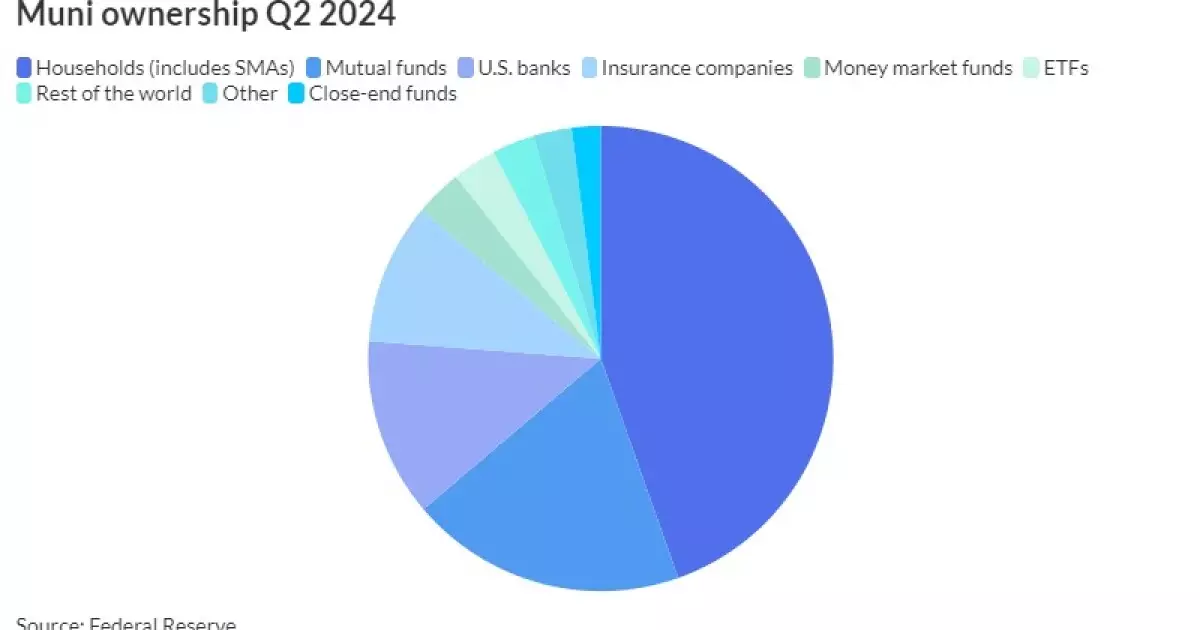The Transformative Shift from Mutual Funds to ETFs: BlackRock Leads the Charge

The financial landscape is undergoing a significant metamorphosis, largely driven by changing investor preferences. The recent announcement from BlackRock to convert its $1.7 billion High Yield Municipal Bond Fund into an active exchange-traded fund (ETF) exemplifies this momentum. Such conversion highlights an escalating shift in demand from traditional mutual funds towards ETFs, a transformation that has been gathering pace in recent years. BlackRock’s decision, articulated by a spokesperson, reflects a broader recognition among asset managers of the evolving nature of investment vehicles and the distinct requirements of various client demographics.
The growth of active ETFs is a testament to their increasing utility in investor portfolios worldwide, with financial advisors now more inclined to include them in their client strategies. This emerging trend isn’t merely about changing preferences but suggests a reinvention of how investments are structured and consumed, with firms like BlackRock at the forefront of this change.
The strategic shift from a mutual fund to an ETF isn’t without its financial implications. By opting for the ETF structure, BlackRock is sacrificing substantial fee income associated with the mutual fund model, as noted by experts like Pat Luby from CreditSights. This move underscores BlackRock’s confidence in the ETF model as a growth driver and a sustainable income source. Freeing up revenue through lower fees hinges on drawing more significant investments towards ETFs, a strategy that could yield long-term benefits, especially against the backdrop of shifting investor priorities.
Data from the Federal Reserve suggests that the appetite for ETFs is voracious, with ETF ownership clocking in at an impressive $122.4 billion in the second quarter of 2024. Conversely, while mutual funds have seen a slight uptick, their overall market value remains significantly lower than before. The continuing decline in mutual fund popularity—down by 13% since late 2020—signals a clear trajectory toward the ETF model, which boasts reduced fees and enhanced flexibility.
The intrinsic appeal of ETFs largely stems from their competitive fee structures. As noted by industry veterans like Roberto Roffo, investors are increasingly fee-conscious, with ETFs typically offering a cost-saving of approximately 50% compared to traditional mutual funds. Beyond the financial considerations, the allure of trading liquidity and flexibility cannot be overstated. Unlike mutual funds, which operate on end-of-day pricing, ETFs facilitate real-time trading, providing investors with the agility to react to market changes instantly—a feature that has become critical in today’s hyper-volatile market environment.
Moreover, the transparency and enhanced tax efficiencies associated with ETFs are additional factors that sway investor preference toward this investment vehicle. This conscious choice has affected strategic decisions among many asset management firms, prompting a wave of conversions from mutual funds to ETFs that began gaining traction in 2021. While the conversion pace has since stabilized, it is clear that the trend is not merely a fleeting phenomenon but represents a profound shift in investment philosophy.
With BlackRock’s recent announcement, questions regarding the future landscape of mutual funds and ETFs inevitably arise. While there have been 118 documented mutual fund-to-ETF conversions since 2021—mostly comprising fixed-income products—the conversion strategy may vary among different asset classes. Dan Sotiroff from Morningstar emphasizes that while the ETF structure bears significant advantages for fixed-income strategies, the limitations in equity strategies may complicate potential conversions.
The evolving market dynamics compel firms to reconsider their offerings and adapt to investor expectations. The outlook for future conversions remains somewhat uncertain; as Pat Luby indicates, not all mutual funds can or will make this transition, especially as the market may reach saturation at some point.
Moreover, as asset managers gauge where they envision themselves in the coming years, decisions must be made with foresight, especially regarding client needs and market conditions. Some firms are positioning themselves to participate in the evolving muni space, with strategies to craft tailored solutions that align with long-term trends.
As the investment community witnesses the shift from mutual funds to ETFs, the evolution reflects broader economic realities. BlackRock’s conversion of its High Yield Municipal Bond Fund signifies a pivotal moment in this transition. The integration of ETFs into investment strategies positions these products as critical levers for managing investor portfolios in an increasingly complex financial environment. As the industry adapts, understanding the nuances of both mutual funds and ETFs will be essential for investors seeking to navigate this new investment paradigm successfully. The future of investing is indeed leaning towards more flexible, cost-efficient solutions—an evolution that BlackRock appears poised to lead.





